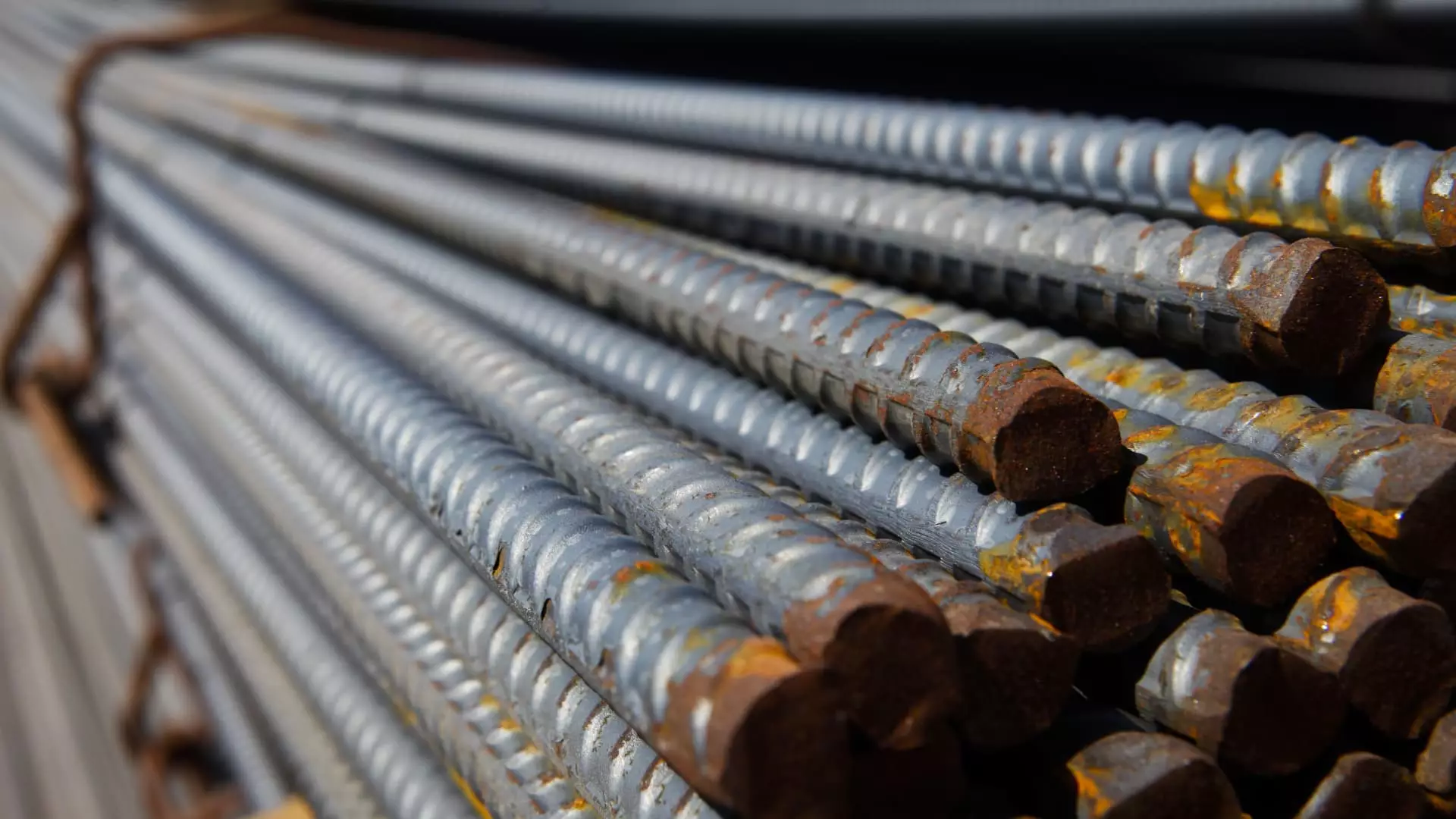The steel industry in the United States stands at a pivotal intersection, largely influenced by recent tariff policies introduced by the Trump administration. While the immediate reaction from investors and market analysts indicates a potential boon for U.S. steelmakers, there remain considerable uncertainties that could undermine long-term gains. The recent imposition of tariffs—25% on steel imports from Mexico and Canada, along with a 10% charge on imports from China—places the spotlight on both opportunities and challenges facing domestic producers.
The market response to these tariffs has been turbulent. Initially, stock prices for steel manufacturers saw fluctuations that mirrored investor apprehension about the broader implications of such protectionist measures. For instance, shares of Nucor, a prominent player in the steel sector, experienced a moderate uptick of around 2%, while U.S. Steel also managed to gain roughly 1% during Monday’s trading. Despite these gains, challenges persist as some stocks like Steel Dynamics fell, highlighting the uneven response among steel companies. This complexity in stock performance reflects investor hesitancy about the long-term sustainability of the benefits engendered by the tariffs.
The core expectation behind the newly instated tariffs is that foreign steel will become significantly more expensive, thereby creating an opportunity for U.S. producers to ramp up production and subsequently increase prices. Leon Topalian, CEO of Nucor, articulated this sentiment, emphasizing the detrimental impact of illegal dumping and currency manipulation by foreign governments. These practices have historically undermined pricing power for domestic steel companies. However, while the tariffs may facilitate price hikes in the near term, analysts caution that increased production capacity may be limited due to subdued demand forecasts.
Market analysts from firms like Morgan Stanley project only modest demand growth, estimating a mere 1.6% rise in steel consumption in the upcoming years. This restrained demand could temper any potential benefits arising from tariffs, as producers may find themselves unable to capitalize fully on improved pricing power. Moreover, segment-specific analyses reveal concerning trends; approximately 25% of U.S. steel demand stems from the automotive sector. Thus, if automotive production experiences a downturn—potentially exacerbated by economic pressures—the resultant drop in steel consumption poses a genuine threat to steelmakers.
The competitive landscape within the steel industry is also reshaped amid these tariff measures. The anticipated acquisition of U.S. Steel by Nippon Steel was effectively halted by the Biden administration, illustrating the complexities that foreign involvement introduces in the domestic market. Currently, collaborations like that between Nucor and Cleveland-Cliffs reflect a strategic pivot among players aiming to bolster their market positions amid ongoing uncertainties. Such partnerships may be essential for navigating a landscape influenced by fluctuating tariffs and demand cycles.
While short-term benefits from tariffs are apparent, long-term forecasts remain clouded with risks. Financial institutions, including Bank of America Securities, have pointed out potential vulnerabilities, particularly within the auto manufacturing sector. The interplay between tariffs, steel pricing, and economic growth could lead to scenarios where steelmakers face reduced profitability if demand fails to rise as anticipated. Furthermore, elevated input costs resulting from sustained tariffs may inadvertently affect competitive pricing and margins within the industry.
While U.S. steelmakers may initially benefit from the protectionist environment instigated by recent tariff policies, the landscape is fraught with complexities that could inhibit long-term growth. A careful assessment of demand trends, global competition, and production dynamics will be critical for steel firms as they strategize for the future. To thrive in this unpredictable environment, these companies must not only adapt to evolving market conditions but also innovate to enhance efficiency and sustainability within their operations. The road ahead requires a balanced approach, one that recognizes both the opportunities presented by tariffs and the challenges posed by fluctuating demand and competitive pressures.

